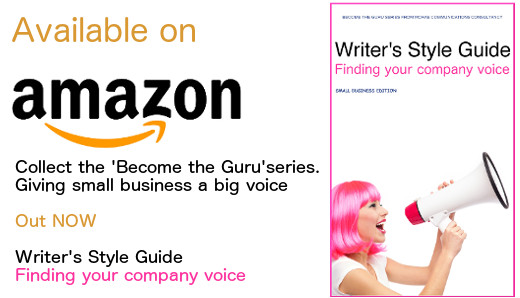 Have you ever wondered whether CVs and résumés are the same thing, just two interchangeable words, or do the terms mean something very different? I was brought up in Scotland and always used ‘CV’ but when I came to Australia I realised people used CV and résumé interchangeably. It turns out there are differences between the two, dictated by intended audience, length and format and, as mentioned, the common usage for the country you happen to be in. Here’s a quick explanation.
Have you ever wondered whether CVs and résumés are the same thing, just two interchangeable words, or do the terms mean something very different? I was brought up in Scotland and always used ‘CV’ but when I came to Australia I realised people used CV and résumé interchangeably. It turns out there are differences between the two, dictated by intended audience, length and format and, as mentioned, the common usage for the country you happen to be in. Here’s a quick explanation.
Curriculum Vitae (CV) is a Latin phrase which, when translated, means the course of my life. The CV tends to be a chronological, in-depth and highly detailed document listing education, achievements, awards and honours. By their very nature CVs tend to take up a number of pages since they provide an overview of your complete working career. As a result the CV tends to be a static document and is not adapted for different job applications. The CV is generally aimed at an academic audience since it highlights academic and intellectual achievements.
A résumé, on the other hand, is a concise document tailored to a specific job opportunity – perhaps just a shortened version of the grand CV. A résumé doesn’t have to be in date order and doesn’t have to cover your whole career. The intended ‘audience’ of your résumé would typically be the HR department, or whoever is hiring for that specific role.
Knowing when to use a résumé or CV not only depends on the nature of the role you are applying for but which country you are applying for the role in. As I mentioned, in Scotland and the rest of the UK and Ireland, you would always use a CV (and is not actually dependent on it being an academic role). Whereas in Australia it’s perfectly acceptable to use both CVs or résumés. With this in mind if you live in Australia it’s probably quite permissible to use the two words interchangeably, but it’s always useful to have an awareness of such differences.
This brings me on to the different types of résumés
The chronological résumé
This is the most commonly used résumé and focuses on presenting your experience in reverse date order. Chronological résumés contain a career summary upfront which sets out your key skills and strengths.
Advantages
- It demonstrates career progression within the same industry.
- Many employers prefer this format as it’s easier to identify the roles and responsibilities in each job.
- Taking a job-by-job approach will highlight your main responsibilities which may be useful if you don’t have many achievements or successes to detail.
Disadvantages
- A chronological résumé will make gaps in your career more obvious
- If you are changing career direction, a chronological résumé will not be so relevant to a recruiter who will be more concerned about the transferable skills that you are bringing rather than the detail of your experience in an unrelated field.
In summary use the chronological résumé in the following situations if you:
- have steadily progressed in one chosen field and are looking for a promotion or better conditions
- have no gaps in your work history
- want to highlight where you have worked rather than what you have achieved
- are staying in the same industry.
The functional résumé
If you want to highlight skills and experience then the functional résumé would be your preferred option. Though it’s not a popular choice amongst recruitment agencies many senior executive positions require a functional résumé alongside a chronological one so that key skills and achievements are easily identified.
Advantages
- A functional résumé will help place the emphasis on what you have to offer as a whole rather than your career progression (eg if you have had lots of different, unrelated roles).
- If you are changing industry, a functional CV will help the recruiter focus on your transferable skills.
- If you are a more mature applicant, a functional CV will take the spotlight away from your age.
Disadvantages
- If you do not have much work experience, you may struggle to highlight achievements in a separate section.
- Most employers prefer to see what you have done so this résumé may raise some concerns about whether you are trying to hide something.
- A functional résumé will not enable you to highlight consistent career progression. If you wish to convey career progression, you should use a chronological format.
In summary use the functional résumé when you:
- are a mature age applicant
- want to change career fields
- have gaps in your work history due to bringing up children, illness or any other reason
- have little experience due to just starting out or just finishing college or university
- want to show a prospective employer that you possess the correct skills for the job even though you do not have experience in that field.
The combined résumé
A combined résumé follows both the chronological and functional format, making it a hybrid résumé. This type of résumé will be slightly longer than the other two, however, it does provide the best of both worlds.
Advantages
- If you have a strong career progression with many achievements the combined résumé will illustrate this clearly.
- Enables you to showcase your strengths as well as your experience.
Disadvantages
- Since it’s lengthier than a functional or chronological résumé, your intended audience may switch off before reading all the way through.
- Not suitable for those with little experience or achievements
- Not suitable for those with employment gaps
In summary use the combination CV when you:
- want to show that not only do you have the right skills for the job but also the work experience to support
- want to emphasise skills that you may not have used for a while
- would have used a chronological CV but want to highlight your skills too
- are applying for managerial or executive positions
- have plenty of experience in the chosen field
- need to pad out your résumé.
 Send to Kindle
Send to Kindle

